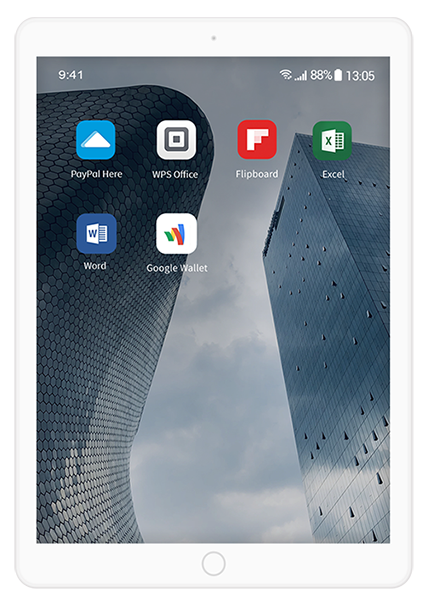The growing importance of technology in all workplaces will eventually place higher demands on the time and productivity of the IT admins. In such a scenario, automation of device management tasks is something that can greatly reduce the workload and allow the team to easily manage the devices. When we speak of automating device management tasks, the term Mobile Device Management (MDM) naturally comes to mind. Depending on the MDM used, you would have different options for automating the device management workflow.
What is the need for automation?
Not all the steps in a device management workflow can be automated. There is a need to clearly classify the tasks that can be automated and the tasks that are best completed by humans. How can you discern the difference?
- The tasks are repetitive: Device management tasks like deploying the same apps to multiple devices, or configuring the same Wi-Fi network in all the work devices can get very repetitive when carried out again and again for the managed devices. Automating such tasks would have remarkable time-saving effects in the workflow.
- The tasks are time-consuming: The time taken by a device management task and the frequency with which it is executed should be taken to account when considering automating the task.
- The tasks are error-prone when done manually: If the human-error margin is high for the device management tasks that require perfection, it is smarter to automate them. For example, tasks like analysing the data and creating reports would be highly error prone. Hexnode lets the admin generate a wide range of reports including device and user reports. The reports can be generated manually or at a scheduled time.
Here, we have listed out 7 ways in which you can automate your device management workflow.
1. Zero Touch Device Provisioning with MDM
The provisioning and deployment of a bulk number of corporate devices would be a hard nut to crack if not for Zero-Touch technology. With MDM solutions like Hexnode, all the company–owned devices can be set up to enroll automatically when turned on for the first time by the user.
2. Active Directory Integration for importing users in real–time
Manually maintaining all the users and the associated managed devices would be a herculean task for even the most skilled of IT admins. Active directory services have played a major role in alleviating the burden. Hexnode allows you to integrate your Active Directory services so that you can manage multiple Active Directory domains from a single console. On adding new users to the AD, the users are automatically synced in the web console without any intervention from the admin. Integrating your Active Directory or Azure AD services with Hexnode helps automate the workflow in a scalable manner to meet the growing needs of your organization.
3. App Deployment to bulk devices
For managed devices, deploying apps is an important device management task. It is not a very efficient method to assign and set up the apps manually for every new device. With an MDM like Hexnode, you can simply create a dynamic policy with the apps to be installed. Depending on the conditions specified for the dynamic policy, the apps would be automatically installed in the devices
4. Role Management
Not all employees would have the same workload. Hence, it makes sense that different groups of employees require access to a different set of apps and services. Restricting user access to just the required apps for company-owned devices would not only increase productivity but also help create clear roles for different departments. It can be done simply with Hexnode using the Kiosk Mode.

How to achieve Kiosk Mode?
- Enroll the device.
- Configure a Kiosk Policy from your Hexnode Portal.
- Assign the policy to the device or the user based on the role.
[/ht_message
5. Network Setup for Managed devices
Unauthorized access to the corporate network often results from intentional or unintentional data leakage from the employees. The threat would be significantly minimized if the network setup is automated by the IT admin. Similarly, the use of a VPN enhances security as it allows users to send data through a private network. It would be a hassle if the admin has to setup the Wi-Fi and VPN configurations for each enrolled device manually. The admin can easily automate this task by configuring a policy with all the configurations and assigning it to the devices as required
6. Automatic OS updates
OS and software updates are important as they often bring with them higher security and decreased vulnerabilities. Left to their own means, users often tend to skip out on important updates. It will be optimal if high priority tasks like OS updates are automated. Hexnode allows you to schedule and automatically install OS updates on the managed devices. For macOS and iOS devices, you can even enforce the OS updates remotely.
7. Compliance reports
Reports are essential for monitoring and analysing corporate assets. Reports are also a valuable aid for any troubleshooting of the devices. Hexnode lets you configure compliance rules so that the devices would be marked as non-compliant on failing to comply with the rules. The device can be marked non-compliant due to various factors like the device does not have the mandatory apps installed in it, or the device has been inactive for a long period of time. Compliance reports give all this information in a single glance to the admin, who can then take the preventive measures. For instance, if the devices are non-compliant due to inactivity for a long period of time, it is possible that the devices have been lost. Such devices can be protected from any breach in security by performing a remote wipe or activating the lost mode using Hexnode MDM. These reports can be scheduled to be generated at regular intervals.
The world of technology is constantly improving and so does the field of device management. Automating even a single repetitive task can be highly beneficial to the device management workflow. Using the right tools and software is important. When it comes to device management, an MDM solution with good support is the best bet. Complex tasks like the onboarding and offboarding processes, as well as network and security management, can be automated to an extent with an efficient MDM solution. The IT team is often asked to do more with fewer resources. Automating all the possible device management tasks would be a step in increasing the efficiency with minimum human effort.






